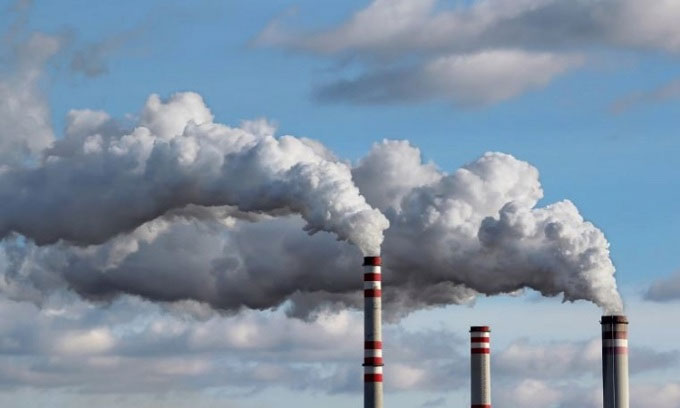Developing the world's fastest CO2 capture system
Researchers from Tokyo Metropolitan University have developed a new compound that removes carbon dioxide from the air 99% of the time and twice as fast as current systems.

New CO2 capture system for high air filtration efficiency at fast speed. (Photo: Depositphotos)
Direct air capture (DAC) technology typically removes carbon dioxide by passing air or exhaust gases through some type of purifier or catalyst, including magnetic sponges, zeolite foams, or materials made of magnetic materials. clay or coffee grounds. Other methods of aeration in a liquid, which absorb CO2 or separate it into solid crystals or debris, are called liquid-solid phase separation systems. The new compound belongs to the second group.
While studying a range of liquid amine compounds, the team discovered a compound called isophorone diamine (IPDA) that was particularly effective at capturing CO2 from the air at a density of 400 ppm, about the same as in gas. current book. The process also happens much faster than other carbon capture techniques, removing 201 millimole of CO2 per hour. This is twice as fast as other DAC systems in the lab and much faster than the artificial leaf device.
The contaminant separates into solid carbamic acid in the form of flakes, which can be separated from the liquid with relative ease. If necessary, the finished product can be converted back to CO2 by heating to 60 degrees Celsius, while releasing the original IPDA liquid to be ready for reuse. Regardless of whether it is stored in a solid or gaseous state, carbon can be stored or reused in industrial or chemical processes.
Now, scientists are looking to improve the system and discover how best to use carbon after capture from the air. They published the study results in the journal ACS Environmental Au on May 10.
- The world's fastest camera can capture 5 trillion frames per second
- CO2 capture from the air is not feasible
- New material captures CO2
- China makes the world's fastest supercomputer
- Tianhe-2 is still the fastest supercomputer in the world
- Video: Warning device gives way to the fastest ambulance
- 480 camera systems capture motion in space
- Take screenshots using Capture XT v2
- China uses the world's fastest computers
- Detect creatures with the fastest eyes on the planet
- Speed chart of the fastest events
- Complete the world's fastest fiber cable service
 Is the magnetic North Pole shift dangerous to humanity?
Is the magnetic North Pole shift dangerous to humanity? Washington legalizes the recycling of human bodies into fertilizer
Washington legalizes the recycling of human bodies into fertilizer Lightning stone - the mysterious guest
Lightning stone - the mysterious guest Stunned by the mysterious sunset, strange appearance
Stunned by the mysterious sunset, strange appearance